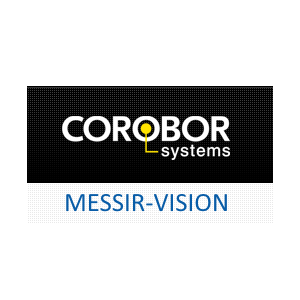Description
Benefits and Features
- Single-lens design for high signal-to-noise ratio and maximized detector sensitivity, resulting in greater performance at low and high altitudes
- High performance and high specification at a competitive price
- Low power consumption with multiple power options
- Tilt angles to 24°, improving performance during precipitation events and reducing impact of solar glare
- Unique continuous comparison of two separate internal quartz clocks to eliminate possibility of clock drift and ensure measurement confidence
- User-friendly stratocumulus calibration capability and easy test with a calibrator plate provided as standard for easy field calibration
- Ability to run on AC or DC power
Detailed Description
The SkyVUE™8 LIDAR ceilometer measures cloud base heights and vertical visibility for meteorological and aviation applications. Using LIDAR (LIght Detection And Ranging) technology, the ceilometer transmits fast, low-power laser pulses (not harmful to eyes) into the atmosphere and detects backscattered returns from clouds and aerosols above the instrument.
A unique, efficient, single-lens design increases optical signal-to-noise ratio and allows for larger optics in a compact package, improving accuracy and measurement performance.
This approach, along with state-of-the-art electronics, provides a powerful and stable platform from which to measure cloud base heights and vertical visibility to high accuracy. The SkyVUE™8 measures the atmosphere with high stability and repeatability, delivering excellent performance in even the harshest of conditions.
The SkyVUE™8 provides information on cloud base heights, sky condition (up to five layers), vertical visibility, and raw backscatter profiles to a range of 8 km.
The unique stratocumulus calibration capability, which allows users to calibrate measurements of scatter coefficients, uses a simple and user-friendly field method, giving complete confidence in the scatter profiles reported and removes the requirement to have the unit sent back for calibration.
Reliable range measurement is further assured by cross-checking two separate internal quartz clocks, eliminating the possibility of unidentified errors due to clock drift.
The SkyVUE™8 can be tilted at various angles up to 24°. Tilting the SkyVUE™ by even a few degrees can be important, as it allows the ceilometer to resist high levels of reflection from large raindrops and frozen particles that can impair vertical-type sensors. The tilt also improves rain run-off on the ceilometer window, resulting in a much higher performance compared with vertical ceilometers.
Tilting to 24° also means that it can be operated anywhere in the world without the sun shining into the lens and resulting in missing data. An internal two-axis inclinometer provides automatic correction of cloud base heights at all angles, ensuring ease of installation and confidence that cloud base heights are automatically corrected throughout the lifetime of the installation.
The SkyVUE™8 complies with ICAO, CAA, and WMO guidance and meets or exceeds all recommendations and specifications. (This includes ICAO 9837, ICAO Annex 3, CAP437, and CAP746.)
Software for data visualization and interpretation
Ceilometer data can be displayed using Campbell’s Viewpoint software or fed directly into existing data systems. The Campbell Viewpoint software will display the output from the ceilometer in a convenient and configurable form, including information on sky condition, mixing layers, scatter profiles, etc. All can be displayed simultaneously or separately with ranges and time scales. For more information on Viewpoint click here.
Datasheet











